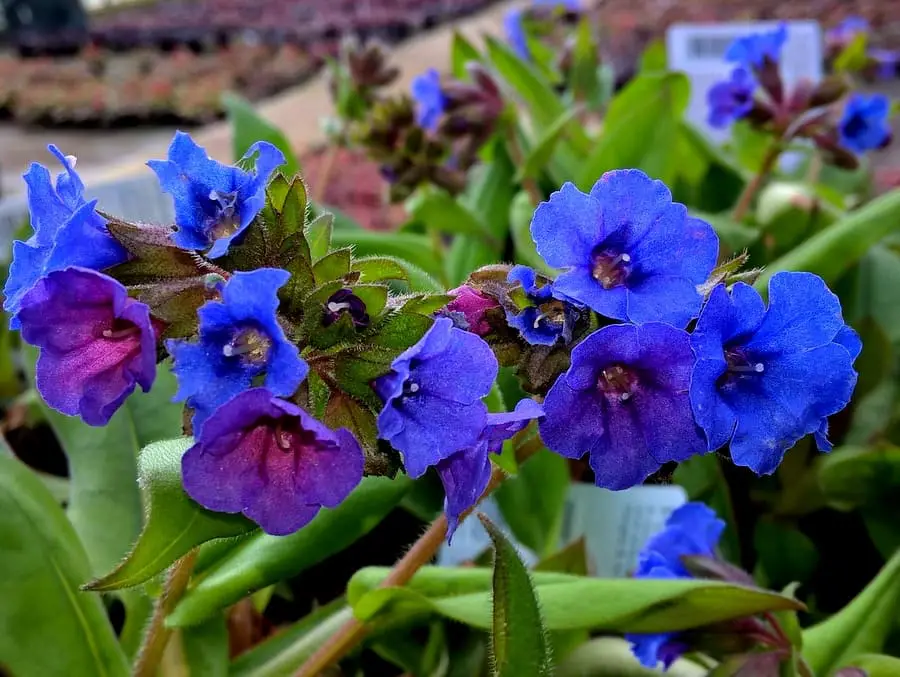Lungwort (Pulmonaria) is a charming perennial that deserves a special place in temperate gardens. Its unique flowering pattern and foliage, along with its hardiness, make it a favorite among gardeners who wish to add a touch of color and texture to their shaded garden spots. This article explores the different varieties of lungwort, offers tips on their cultivation, and discusses their uses in the landscape.
Varieties of Lungwort
Lungwort belongs to the Boraginaceae family, and there are several species and hybrids that vary in leaf patterns and flower colors. Some popular varieties include:
- Pulmonaria officinalis – Often considered the classic variety, it features pink to blue flowers and spotted leaves.
- Pulmonaria ‘Trevi Fountain’ – Known for its vigorous growth and cobalt blue flowers, this variety has long, silver-spotted leaves.
- Pulmonaria ‘Sissinghurst White’ – Unique for its pure white flowers, it’s a stunning variety that brightens up shady areas.
- Pulmonaria ‘Raspberry Splash’ – Distinguished by raspberry-pink flowers and silver-spotted foliage, this hybrid is resistant to many common diseases.
- Pulmonaria ‘Opal’ – Also known as ‘Ocupol’, it features pale blue to opalescent flowers, making it a subtle yet beautiful choice.
Each variety has its own charm, but all generally enjoy similar growing conditions and care.
Cultivation Tips
Lungwort thrives in shade to partial shade, making it ideal for woodland gardens or north-facing sites. Here are some tips to ensure your lungworts thrive:
- Soil: Lungwort prefers moist, well-drained soil rich in organic matter. Amend clay or sandy soils with compost to improve its structure and fertility.
- Watering: Keep the soil consistently moist but not waterlogged. Mulching helps retain soil moisture and keeps the roots cool.
- Feeding: Apply a balanced, slow-release fertilizer in the spring to support robust growth and flowering.
- Pruning: After flowering, trim back the spent blooms and ragged leaves to promote fresh foliage growth. This helps maintain an attractive mound-shaped habit.
- Disease Management: Lungwort can be prone to powdery mildew. Ensure good air circulation around plants and avoid overhead watering to minimize the risk.
Landscape Uses
Lungwort is highly versatile in landscape design, primarily due to its decorative leaves and vibrant blooms. Here are a few ways to incorporate lungwort into your garden:
- Understory Planting: Plant lungwort under deciduous trees where it can enjoy filtered sunlight.
- Border Edges: Use lungwort along the edges of shaded borders or pathways where its flowers can be appreciated up close.
- Companion Planting: Combine lungwort with other shade-loving perennials like hostas and ferns for a varied texture and color display.
- Containers: Smaller varieties of lungwort do well in containers as part of a shaded patio garden.
Lungwort not only adds aesthetic value to the garden but also attracts pollinators such as bees during its flowering period, enhancing the biodiversity of your garden.
Conclusion
Lungwort is a low-maintenance, high-impact perennial that can transform shady spots in the garden into areas of lush and vibrant growth. With a range of varieties to choose from and simple cultivation needs, lungwort is an excellent addition for both novice and experienced gardeners looking to enhance their shaded garden spaces with texture, color, and life. Whether planted in borders, woodland settings, or containers, lungwort will not disappoint with its charming blooms and decorative foliage.


